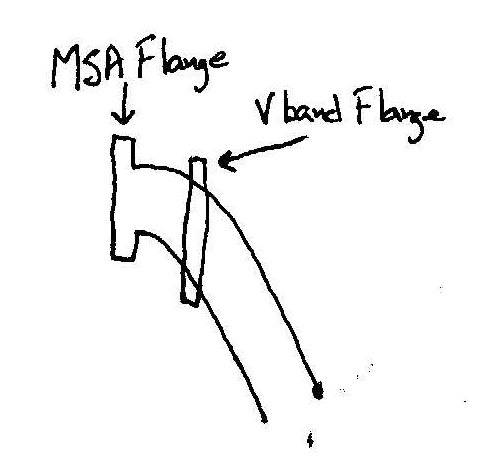-
Posts
1568 -
Joined
-
Last visited
-
Days Won
1
Content Type
Profiles
Forums
Blogs
Events
Gallery
Downloads
Store
Everything posted by Zmanco
-
Yes, all the voltages you will measure for MS are DC. It doesn't matter what brand multi-meter you use.
-
Trace it back - is there 12V at the relay board for the fuel pump and coil? If yes, then there's a problem with the wiring to the coil. If no, then start looking for issues with the relay board. Is the relay properly seated? Also, you might want to power the pump from only the relay board so you don't have that issue to deal with. You don't want to land up with a problem in the relay board masked by power from the stock fuel pump wiring being fed back into it. I doubt the stock wiring is robust enough to power the new pump, at least not indefinitely. A word of advice with electrical wiring: make it as clean as you can now. If/when you have to come back and trouble shoot it later, it will only be more confusing. Label everything with tape and permanent marker. Take notes on the MS diagrams and don't lose them. Wiring is only hard when its messy and undocumented. The extra time you spend now will be more than saved by a) not being stranded on the side of the road later, and actually being able to make changes and additions later without causing other problems.
-
Getting the inverted setting wrong should not damage the VB921. All the driver does is act like a switch opening and closing to control current through the coil. All the invert setting does is determine if the switch opens or closes on the trigger event. The stim is the easiest way to check if it's ok or damaged.
-
MT should prompt you for the filename (and of course where it will be saved) when you click file>datalogging>start. If it doesn't, then something is broken with Windows or your MT installation. I'd try it again and look closely to see where MT is saving the log. And, No, MLV does not need to be running while capturing the datalog.
-
For now, go on the assumption that the problem is somewhere else. It's impossible for any of us who aren't there and seeing this with our own eyes to say that something is "fine" so keep an open mind. But as I said earlier, if while you're cranking the engine megatune is showing a few hundred rpm, then it's probably not your dizzy. BTW, have you learned how to datalog and review it with MegaLogViewer? You're going to want to use that for tuning - it's by far the easiest and fastest way to get up the curve. You might even want to capture a datalog while cranking and post it here. We might be able to see something.
-
With the ignition on and engine not running, it should be around +12v.
-
So I assume you are following the wiring diagram from your post #47. Did you use the 10A fuse that it shows? If so, check it as that would explain what you're describing. In fact, with the ignition on, check to see if you have +12V where the power wire connects to the coil.
-
Generally it's not a good idea to power something via 2 separate paths. And it complicates troubleshooting as well. But why do you think how you are powering the fuel pump is the cause of your lack of spark? I don't follow your logic.
-
After making the changes Moby and I recommended, have you tried to start the car? If not, try it again before you change things further. It's a good practice to try one thing at a time. Change too many at once and it's easy to get into never-never land. Assuming you try it and it doesn't start, my next question is how are you driving the coil? Is MS driving it directly or are you using something else such as MSD? You said Megatune is showing an RPM reading when you're cranking, so it sounds like the dizzy to MS interface is ok. It's rare that you'll damage the coil - more likely to damage the MS driver.
-
I only had a quick moment to look, but I see that the cranking rpm is zero - set it to 300 or so. At zero it means that as soon as the engine begins to crank MS will immediately go into run mode. That doesn't explain your lack of spark, but it isn't helping.
-
My goal with the cam change was to smooth out the torque curve and move the peak up a little higher - not necessarily gain more power. In the process of retuning with MS I found a mistake in a configuration and decided to add a little more advance. My observations are all seat of the pants and the net was a little less torque below about 3500 rpm in exchange for less fall off in torque between 5.5 and 7k rpm. But if I had to guess, and based on previous experiments with cam timing, most/all of that difference was due to the cam change, not the timing change. I don't want to hijack this thread, just thought it was interesting that I was able to add more advance after a small change to the cam timing. One more variable for us to tweak...
-
Interesting comments about changing cam timing. This weekend I experimented with delaying the cam 3 degrees and found I was able to run several more degrees of ignition advance from 4k on up. I did not have the time or opportunity to do any controlled testing so the exact number is probably meaningless, but I did add 3 degrees and did NOT hear any audible detonation. The last time I experimented with timing, that much more timing WOULD have caused audible detonation. However, the temps were a little cooler, so I'm not convinced this will still be a safe tune when it warms up again. Engine is an L28et block, shaved P90 head (8.3 CR) with cyl 5/6 cooling mod, Schneider stage II turbo cam, T3/T4OE limited to 8 psi for now.
-
There are 3 ways IIRC to wire up the ignition input circuit on the MS3.0 board. I'm not at home this week so can't check my notes for how I did it (I'm running a turbo CAS as well) but I believe one of them was for an opto isolator input, and that's the one you want. If you don't have it wired for the correct type of trigger, you're never going to get spark. If others haven't given you the answer by then, I can check late Friday when I'm home.
-
A few things: - Did you follow Moby's recommended steps in post 10? If not, stop and get these settings correct. Your black plugs are not surprising if you're using someone else's tables from stock injectors with your 440's. - Ed is correct: at this stage pull the O2 sensor before you destroy it from the excessive richness. I killed my first one exactly that way. At the stage you're at, you don't need it yet. - You're not going to want to hear this, but I think you have a lot of MS reading to do in order to tune intelligently. Right now you're guessing/hoping that you can just get it up and running and then figure it out on the fly. As anyone else who's been through their first MS install will tell you, that's a recipe for frustration. MS has a rather steep learning curve at first, but if you study up on the theory BEFORE, you're a lot more likely to avoid making silly mistakes in configuration that cause you fits in getting it started like you're seeing now. - Another suggestion you may not want to hear: before you invest any more time on MS1, spend the $60 (IIRC) and upgrade to the MSII processor. MS2/Extra is light years ahead of MSnSe in terms of capabilities, features, etc. And unfortunately the way fuel is calculated is different enough in MSII/E that you'll pretty much have to start over. Again, ask me how I know Good luck and stay with it. It's worth it!
-
Taken this morning on I25 in Southern Colorado as I drove down to Albuquerque. Sorry, cellphone pics - I realized the sun was about to come up so just shot a few at 75 ... there was less than 60 seconds between all 3.
-
I agree, they were 100% focused on solving the problem. Notice how while they were descending over the river and the ATC was suggesting runways at other airports that they were coming back with single word replies. I got a shiver as it became obvious via their replies that they were not going to be able to land on land. Like thrustnut said, if I were ever in a clutch situation, I hope I'd be able to react that calmly. Of course, I'm sure their training for loss of power helped, but in fairness, I doubt the simulations had them ditching in a river.
-
The first one left me speechless.
-

ok, what do you make of this???? HG Failure....
Zmanco replied to jc052685's topic in Nissan L6 Forum
Thanks rejracer for the additional insights - I was having a hard time too with his statement that the burn rate was independent of rpm. And thanks for the turbobricks link - there's a discussion of tuning strategies at various boost levels in the #9 post that gave me some ideas to try. -
It's not that hard to understand the concept behind how these machines operate, but every time I see one do something like this with my own eyes, where the accumulation of errors and tolerances DON'T get in the way, I just grin! That was beautiful.
-
Very resourceful - I'll be curious to hear what you think of it the sound once it's all installed. I have thought about where to mount speakers in the front, but hated the thought of loosing the little bit of ventilation there is in the cabin by mounting speakers in the vents. You live in SB - gets warm in the summer - what are your plans for ventilation?
-
"Twenty years from now you will be more disappointed by the things that you didn't do than by the ones you did do." - Samuel Clemens (Mark Twain)
-
It is a rush and more. Afterward, driving on the street is so tame. You should try it at least once... it's humbling and I think you'll find it will change your attitude toward driving fast on the street - for me it's just not fun enough to be worth the risk to me, my license, and others.
-
I have a very similar setup with the same cam. I haven't dyno'd yet, but based on my VE tables in MS, my torque peak is right around 5k which is pretty close to yours. So you might eek out some more HP by retarding the cam, but that wouldn't increase the torque peak would it? Wouldn't that just shift the peak up a few hundred rpm or so (which would help HP of course). Seems like you should have more torque based on what others have posted. Maybe the dyno just reads conservatively?
-

need to know the ohms of the fuel gauge
Zmanco replied to unbreakable's topic in S30 Series - 240z, 260z, 280z
Ron, is the '73 sender the same? -

